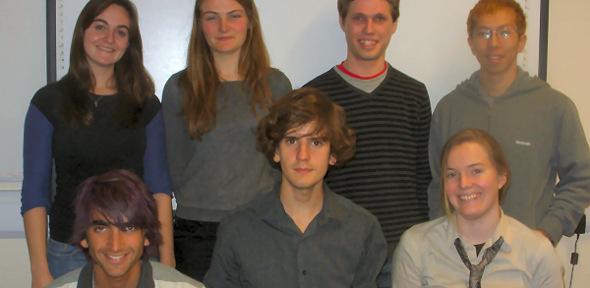
The Cambridge 2009 iGEM team was awarded the Grand Prize at the iGEM2009 Synthetic Biology competition finals at MIT. This was against stiff competition from over 100 teams in top international institutions. The team, which included two engineering students, Mike Davies and Alan Walbridge, provided a superb description of their work engineering DNA devices for transcriptional tuning and pigment production in environmental biosensors. As well as winning the overall prize for best project, the Cambridge team was awarded a gold medal, and trophy for the best project in the EnvironmenI would certainly recommend other undergraduates to take full advantage of the UROPs, as the choice of work you can do is vast and it is a fantastic insight into what research is really like.t Track.
I would certainly recommend other undergraduates to take full advantage of the UROPs, as the choice of work you can do is vast and it is a fantastic insight into what research is really like.
Mike Davies
iGEM is the International Genetically Engineered Machines competition, held annually at MIT. It is the central event for the field of Synthetic Biology. This year 112 teams from universities all over the world met in Cambridge, Massachusetts to compete against each other and show off their summer projects.
Synthetic Biology is fundamentally about the union of biology and engineering, applying engineering principles to Biology. By modulising "parts" and giving them all the same input and output type, different types of bacteria can be created from strings of DNA code. A standard modular biological part is called a BioBrick - a string of DNA that has a particular start and finish sequence, which allows them to be easily joined together. When two BioBricks are joined together, you end up with a new, bigger BioBrick. The field promises to make devices to produce fuel or animal food from waste; make devices to soak up carbon from the atmosphere and lock it away; synthesise plastics without using oil; create devices to sense pollutants; and create new drugs.
The Cambridge 2009 iGEM team has created two kits of parts that will facilitate the design and construction of biosensors in the the future. The team successfully characterised a set of transcriptional systems for calibrated output (Sensitivity Tuners) and expressed a spectrum of pigments in E. coli, designing a set of Colour Generators. They were creating a system for detecting the concentration of a specified input chemical, which, depending on the concentration of the input, would produce a different colour pigment output.
Though E. coli does not naturally produce any pigment, several other bacterial species secrete pigmented antibiotics. The team mined bacterial genomes for pigment-producing operons, and transformed the most prominent candidates into E. coli. In particular, the team devoted their summer to 3 different pigment systems: Carotenoids (Red/Orange/Yellow), Melanin (Brown/Black) and Violacein (Purple/Green).
Mike Davies had the following to say about the iGEM experience "Both myself and Alan got involved with iGEM through the Undergraduate Research Opportunities Programme (UROP) scheme. I would certainly recommend other undergraduates to take full advantage of the UROPs, as the choice of work you can do is vast and it is a fantastic insight into what research is really like. I'd like to use this opportunity to thank Alexandre Kabla, Jorge Goncalves and Daniel Wolpert for their support with the Department's UROPs. Keith Glover and Ian White have also been helping with the recruitment of Engineers for iGEM and many other UROPs."

